Sidetracks & Detours present PASS IT ON 48 walkabout Supplement 14 4 2024
Sidetracks & Detours
present
PASS IT ON 48
walkabout Supplement 14 4 2024
Hello and welcome to another Sunday congregation news that was impossible to include in our daily postings of our not-for-profit, free to read daily blogs at Sidetracks and Detours. Today we deliver yet more arts related items from the field of folk music, and literature from the libraries of Charles Dickens. We are reminded by Peter Pearson that although not all songwriters draw acclaim their songs often do. And our Island Insight from Lanzarote is about a Nobel prize-winning author who came to settle here in exile from his homeland. So we are confident there are plenty of arts-related stories to read here, especially when you remember you can tour our easy to negotiate free archives of over 1,100 free items. When you have browsed through what we have to offer you might like to share our link with your like minded, arts loving friends. They might well like you to do that too. Next week we look at what happens to stars who lose their sparkle, and we reconsider what I have thought was a barren year of music, but that now looks quite different from fifty years away, so we´ll perhaps bump into you round the corner as we follow our happy trails.

CONTENTS

Literature
CHARLES DICKENS AND GERMANY
essay by Tony Brady
Live Folk Music
MANCHESTER FOLK
previewed and reviewed by NEWSLETTER
Live Folk Music
first wave of artists signed for EFEx 2025
previewed by SOUND ROOTS
Jazz On Air
HOT BISCUITS served by Steve Bewick
A Reader´s Perspective: All Points Forward
RICHARD DOBSON-THE GULF COAST BOYS
review by Peter Pearson
Island Insight
JOSÉ SARAMAGO HOUSE MUSEUM:
celebrating 13th Anniversary preview by Norman Warwick


o
Literature
CHARLES DICKENS AND GERMANY
essay by Tony Brady

In July and August of 2018, the Dickens Society Symposium was held for the first time in Germany. As Contributor Natalie J. McKnight noted in her remarks on the first day of the event, ´Charles Dickens, in fact, never visited Germany´. Thus, the choice to hold the event in Tübingen could be seen by some people as a bit odd. However, as a number pf symposium participants showed, there are connections linking Dickens and Germany and strong interest in the British author in the symposium’s host university town.
For instance, Bethan Carney’s symposium presentation was titled “The Ghosts of Christmas Carols Past: The Influence of German Märchen on A Christmas Carol.” Additionally, several Tübingen University students created an exhibition poster on Dickens’ reception in Germany. Although admittedly not vast, there exists some scholarship on Dickens and Germany. One early work by E. N. Gummer comments on members of Dickens’ family who visited Germany, the reception of the author’s work in the country, and some references to Germany and German culture in various Dickens publications.

Scholars Gummer and Anderson have noted that the relationship between Dickens and Germany was one that began early in the author’s career with translations of The Pickwick Papers and that reached its height with David Copperfield. The popularity of translated texts in German-speaking regions (mostly of works originally in English or French) extended to Dickens’s fiction despite (or perhaps because of) a reduction of “alterity, or foreignness, of Dickens’s novels for a German audience”.
While critical and mainstream admiration of Dickens’s writings waxed and waned in the German-speaking world during the author’s lifetime, Dickens’s knowledge of German writings and culture seems never to have been extensive. Dickens could neither speak nor read German, and his library collection of German editions of his writings was relatively small. Nevertheless, several times he wrote in letters about his deep regret about never learning German. In addition, he saw to it that his eldest son received an education at Leipzig by seeking the aid of his friend (and a publisher of his works) in Germany, Christian Bernhard Tauchnitz. Dickens’s children Francis and Kate also visited Germany in the 1860s.

Our Mutual Friend References to Germany in Dickens’s works, although not copious, do appear regularly. For example, The Pickwick Papers, Nicholas Nickleby, and Little Dorrit contain German characters. Cousin Feenix – of Dombey and Son – lived for a while at Baden-Baden, and Mr. Skimpole of Bleak House sings German drinking songs. The piece “A Christmas Tree” calls the holiday decoration “that pretty German toy,” and in – Our Mutual Friend – Silas Wegg is described as looking like a “German wooden toy”. In – The Uncommercial Traveller – there are several references to Germany and German objects, such as the “travelling chariot” “of German make”. While not all references to Germany, German people, or German objects may seem essential to the plots of Dickens’s works, they contribute to the vibrant narratives that Dickens created and was alternately praised and criticized for during and after his lifetime.
In post war Germany, with the country’s people lacking food and medicine and its publishing houses under the control of Allied authorities in order to prevent a resurgence of Nazi ideology, the publishing industry encountered more transformation. Still, Dickens’s presence continued to be felt, and perhaps augmented, due to positive perceptions of the writer and his works. Stefan Welz notes that Dickens’s reputation as a model of Englishness was “a popular corrective against any kind of Anglophobia stirred up by the Nazis. Moreover, the very person of Dickens stands for a time of cultural exchange between the two countries since he maintained a close personal relationship with it. The rise in the quantity and quality of scholarship on Dickens published in English during the 1950s and 60s was followed by such an increase in works on the author written in German, especially in West Germany around the time of the centenary of Dickens’s death.
Today, there are more recent traces of interest in (and fondness for) Dickens in Germany not just through critical works by scholars of the country, but also in some quite surprising areas and ways. For instance, the MS Charles Dickens, a cruise ship that frequently sails the Rhine River and stops at ports in Mainz and Cologne, contains Dickens-themed rooms and the three decks Oliver Twist, Copperfield, and Nickleby. In addition, a Berlin elementary school named after “the famous author and philanthropist” was established in 1971 (on the street Dickensweg) and boasts “a well-stocked English-German library” (Charles-Dickens-Primary-School).
While the use of Dickens’s name in these ways sometimes may seem exploitative, the fact that a vessel drifting up and down the Rhine, an educational institution in Berlin, and hundreds of books in English and in translation, can be found in German bookstores, matters. Certainly, the many in Tübingen at the very least, attest to Dickens’s enduring name and presence in a country that he never visited but sent his children to and referenced in a number of his writings.
Surprise! Surprise!
SOMETHING FOR THE WEEKEND – A treasured book boomerangs.I arrived in Blaisdon Hall, Salesian School of Trades, aged 12 in April 1952. My only personal possessions were a small plastic duck – it was given to me by a sympathetic fairground stall holder as a consolation prize. I had failed to hook the duck as it floated in a circulating pool and my precious pennies were all spent.Another treasure was a book: Biggles Sweeps the Desert. It was a 10th birthday gift from a visitor to St. Joseph’s Home: “Uncle Jonas” as it was signed. One of kind local people who visited as “Uncle or Auntie” for the day.The book was quickly absorbed into the school library. As for the duck – it floated out to the sea in August, while I was school camping under canvas in Porthcawl, Glamorgan, South Wales.Last Thursday, I was valuing hundreds of books in the Charity known as EMMAUS Gloucester. I took a closer look at a pile of books destined for pulping and recycling into re-usable paper. One looked distantly familiar: not only was the title – Biggles Sweeps the Desert – but the very book signed by – Uncle Jonas – gifted to me seventy four years ago. Emmaus enables people to work their way out of homelessness, providing meaningful work, training, support and a stable home for as long as someone needs it.
© Tony Brady.

Live Classical Music
FOTHCOMING EVENTS
previewed by Bournemouth Symphony Orchestra newsletter
Music-making and live performance lies at the heart of everything we do at the BSO.
We perform regular full symphonic concerts and smaller chamber performances across the South West of England from our homebase at Lighthouse, Poole. Many of our Wednesday night Poole concerts are also streamed live as Digital Concerts which are then available to watch on demand for 30 days after the performance. Find out more about what’s on below.
We offer great multibuy discounts – the more you visit us the more you save! Discounts are applicable for all live concerts booked directly through the BSO ticket office and discounts are automatically applied as you reach each qualifying level, from 5% to 20% for 15+ concerts. We also have a number of concessions – click on the ‘Information on buying tickets‘ link for more details.
If you have a ticket query please email hello@bsorchestra.co.uk with details and a contact telephone number, and a member of the marketing team will get back to you as soon as possible. You may also like to call us on 01202 669925 but please be aware that you may need to leave a message.
Meanwhile we present a couple of highlights on the calendar.
Portsmouth Guildhall
Guildhall Square, PortsmouthPO1 2AB
Price:
£7.75 – £27.75
Tom Fetherstonhaugh
Conductor
Alexandra Dariescu
Piano
with Classic FM’s
Anne-Marie Minhall
Enjoy an evening featuring five of the greatest works in classical music!
Rossini’s evocative overture with its flowing melodies and infectious momentum, is instantly recognisable while Grieg’s Piano Concerto is loved for its lyrical and melodic tunes, drawn from Norwegian folk music. Witness the fire, passion and revenge in a doomed Spanish love story in the orchestral suite from Bizet’s Carmen and bathe in the silvery light of Debussy’s ode to the moon. Finally, Gershwin’s vivid musical postcard portrays the impressions of Parisian life – the American tourist brought to life in a bluesy trumpet solo, rollicking syncopated rhythms, and sweeping, romantic melodies.
Works and composers
Rossini The Thieving Magpie Overture Grieg Piano Concerto Bizet Carmen Suite DebussyClair de Lune Gershwin An American in Paris
Proms in the Park 2024
Friday 25th July 2024
A fantastic weekend of concerts for everyone!
Meyrick Park Proms in the Park is back for another fantastic weekend of music and fireworks and two spectacular concerts. On Friday 26 July we have our Classical Extravaganza with some of the best classical music ever written including Rimsky- Korsakov’s Scheherazade, John Williams’ Jurassic Park, The Last Samurai by Hans Zimmer, other masterpieces by Johann Strauss, Bach and Grieg. and ending in an explosive finale with Wagner’s rousing Ride of the Valkyries; and Saturday 27 July sees the return of our sensational Disco Symphonic Spectacular featuring an explosion of Seventies Disco hits, full Disco band and star singers. It really will be a highlight of the summer so make sure that you are part of it.
Early bird tickets are currently £30 (£19 for under 18s). Full price, on the day bookings will be £38 per ticket. Booking fees apply. Click on the links below to book tickets.


Folk Music
MANCHESTER FOLK
previewed and reviewed by NEWSLETTER
The first wave of artists signed to the Manchester Folk Festival 2025 has been announced already !! The event will be held from Thursday 20th March to Saturday 22nd March 2025 and will be held at various venues. These include Band On The Wall, Halle St. Peters, Night & Day, The Castle Halle at St. Michaels and New Century Hall, with each of these already confirmed as 2025 arenas.
We are proud to reveal our first wave of artists, which features Jon Boden & The Remnant Kings, Nick Hart and Tom Moore, The Deep Blue, Cohen Braithwaite-Kilcoyne and Holly Clarke, as well as two acts currently riding high in the Official Folk Albums Chart, Katherine Priddy (no. 6) and The Longest Johns (no. 21).
Festival wristband holders will have access to all venues throughout the weekend, giving them the exclusive opportunity to tailor the festival to their own tastes, dipping between intimate spaces and main stages with ease, and enjoying a selection of over 20 artists each evening.
There is, of course, plenty of folk to come this year too.
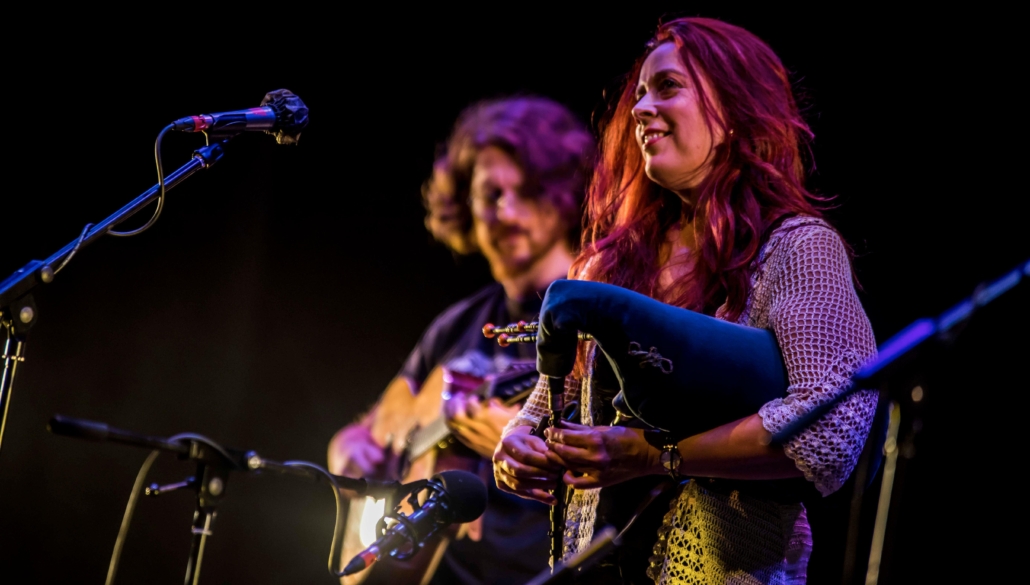
On Friday 19th 2024 April Kathryn Tickell And The Darkening (right) bring the music of Northumberland´s unique borderlands to Manchester, when they appear at Halle St. Peters.
Led by multi-award-winning Northumbrian smallpiper and fiddler, Kathryn Tickell, The Darkening is made up of: Amy Thatcher (accordion, synth, clogs, vocals), Kieran Szifris (octave mandolin), Joe Truswell (drums, percussion); with Josie Duncan from the Isle of Lewis (vocals, clarsach).
With their dazzling chemistry and glorious vocal harmonies, together these players conjure a variety of otherworldly soundscapes. Witness their signature brand of ‘Ancient Northumbrian Futurism’ for yourself this spring!

Good Habits (Bonnie Schwarz – cello + vocals, Pete Shaw – accordion) mix virtuosic musicianship and vocal harmony with vivid storytelling, drawing on their diverse musical tastes and weaving them into an action-packed narrative of folky goodness.
Good Habits proudly parade their Quarter Life album release and drop in at Gullivers on Saturday 4th May in Manchester.
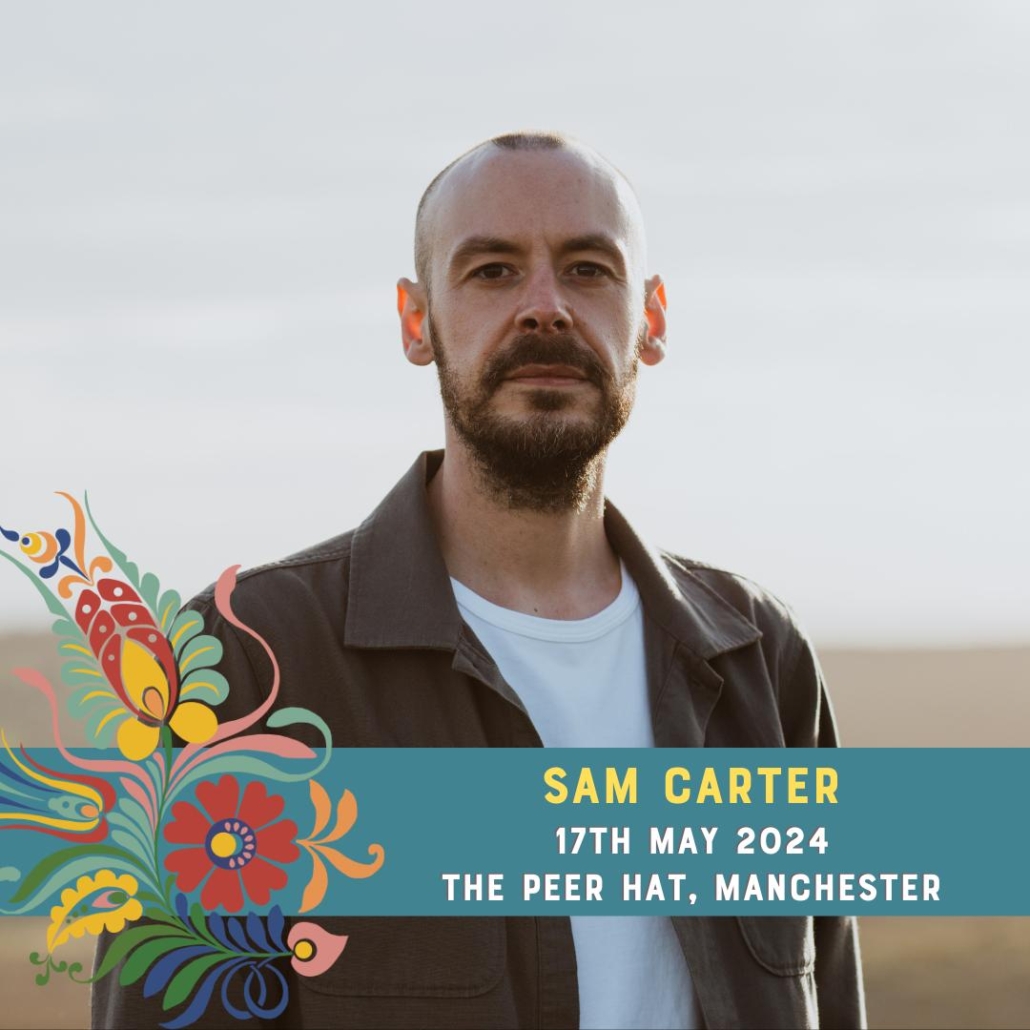
Sam Carter has been collecting admirers of his music for a dozen years or so now. He will demonstrate how with a concert at The Peer Hat, Manchester on Friday 17th May.
Over the course of his fifteen-year career, Sam Carter has earned a reputation for vivid, narrative-driven songwriting. Renowned by many as “the finest English-style fingerpicking guitarist of his generation” (Jon Boden), don’t miss this award-winning musician previewing brand-new material from his latest album.
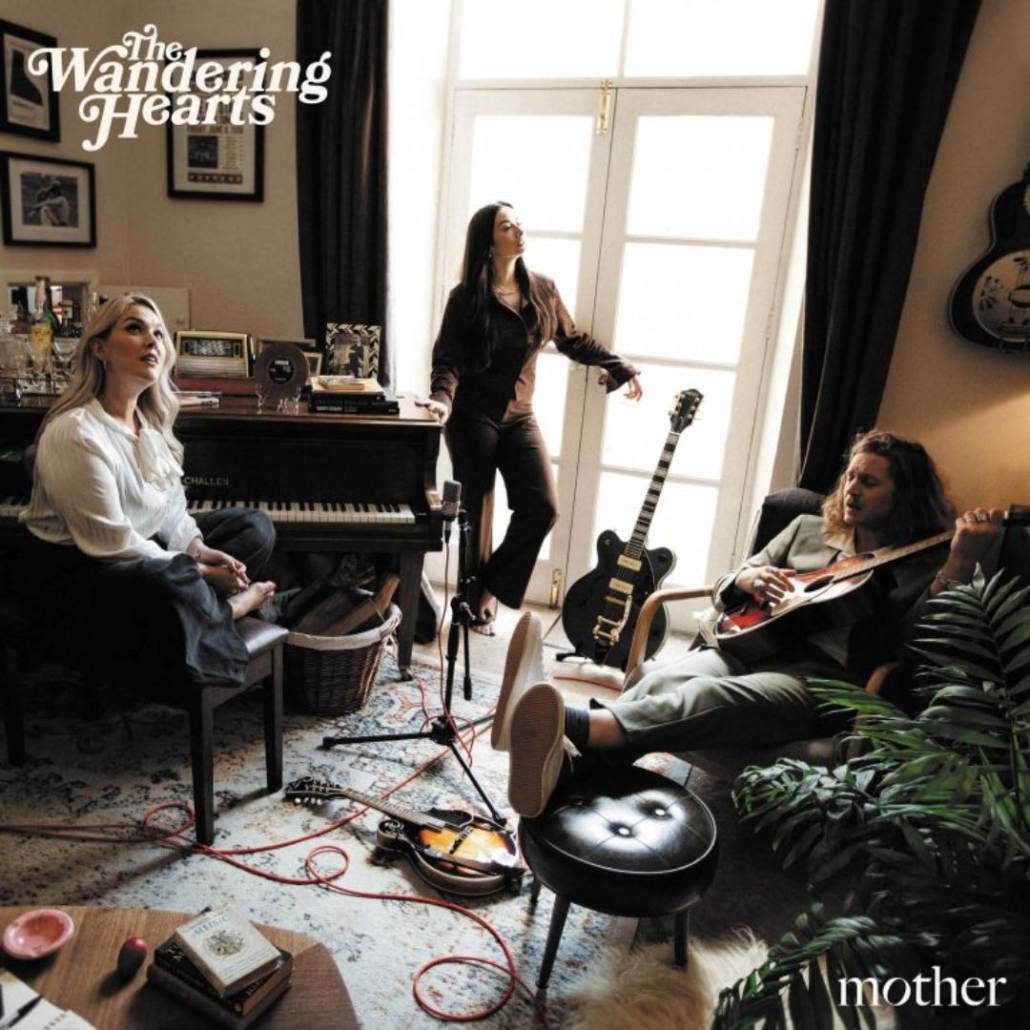
We continue to live during interesting times of folk music in the UK, with so many strong hands at the tiller leading artists into the spotlight. The innovation of a specialist chart for record sales of folk music has attracted much attention. It is not too surprising then when the most recent monthly chart contains an unprecedented eighteen new releases including a new number one and top three !
Straight in at no. 1 is Build Something Better by Britain’s most relevant political songwriter Grace Petrie. Produced by folk-punk legend Frank Turner, the album is for anyone whose broken heart beats for the hope of a brighter tomorrow. This DIY release also reached no. 27 in the main UK album chart, no. 6 on the UK sales chart and no. 1 on the UK download chart in its first week.
Coming in at no. 2 is All Now by The Staves, which marks Jessica and Camilla Staveley-Taylor’s first release as a duo, following their sister Emily’s departure. Far Out describe the record as, ‘simultaneously an existential nightmare and a beacon of optimism, its themes as vast as the musical talents of the Stavely-Taylor sisters themselves’.
New at no. 4 is Mother by The Wandering Hearts, the only British act to debut at both the iconic Ryman Theatre and The Grand Ole Opry in Nashville in the same week. Their new album blends flavours that bring to mind Simon & Garfunkel, Fleetwood Mac and First Aid Kit.
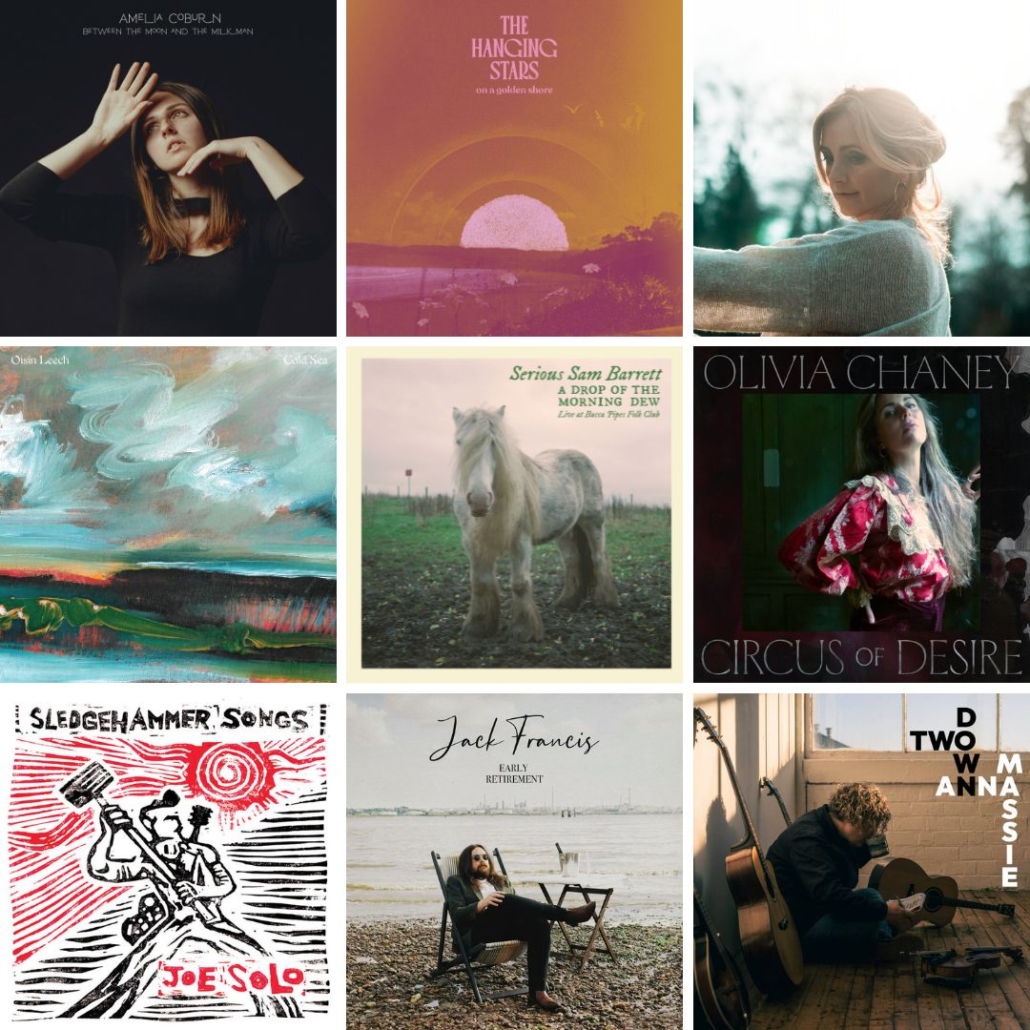
Other new entries to the Top 40 are A Song In The Morning Light by Alan Hull at no.13, Between The Moon and The Milkman by Amelia Coburn at no. 15, On A Golden Shore by The Hanging Stars at No. 17, Cara Dillon’s Coming Home at no. 18, Oisin Leech’s Cold Sea at no. 19, at no. 22 Martin Carthy’s self-titled debut, Serious Sam Barrett at No. 27 with A Drop Of The Morning Dew, Early Retirement by Jack Francis at No. 30, Circus of Desire by Olivia Chaney at No. 31, Sledgehammer Songs by Joe Solo at No. 28 and Two Down by Anna Massie at no. 40.

Live Folk Music
first wave of artists signed for EFEx 2025
previewed by SOUND ROOTS.
Taking place on the 20th, 21st and 22nd March 2025 in The Northern Quarter of Manchester, England, the English Folk Expo (EFEx) industry showcase runs alongside the public festival Manchester Folk Festival, where EFEx industry delegates rub shoulders with ticket-buying audiences.
The first wave of artists announced for EFEx/Manchester Folk Festival 2025 are…
The Longest Johns (pictured above) – A TikTok sensation, who led the way in the mainstreaming of sea shanties, The Longest Johns have gone on to justify all the hype and build an impressive audience.
Katherine Priddy is on the rise and rise, topping the UK Folk Albums Chart, signing with Cooking Vinyl and taking to major stages across the UK and beyond. Watch out. There’s more to come from Katherine.
Jon Boden & The Remnant Kings – A key figure in the English folk scene, not least as the co-founder and frontman of Bellowhead, Jon’s own big band, The Remnant Kings, features a host of major folk names. Expect the unexpected.
The Deep Blue – From Manchester, this all-female line-up describe themselves as, ‘quietly outspoken and with an air of rebelliousness’. Formed in 2020, major airplay and a host of key festival appearances have followed.
Cohen Braithwaite-Kilcoyne – Two times BBC Folk Award nominee, Cohen is a singer and masterful player of the Anglo concertina and melodeon. A member of the band Granny’s Attic, an educator, researcher and writer, he is most of all a passionate and persuasive advocate for English folk music.
Holly Clarke – Singer, guitarist, balladeer and rising folk star, Holly is all about the stories. She communicates with infectious energy and a passion for traditional song, while also supporting LGBTQ+ artists through the Folk Is Queer concert series.
Nick Hart and Tom Moore – Vocals, viola, tenor viol, drones, basses and harmonium; together Nick and Tom are acclaimed as exceptional instrumentalists and for their new interpretations of traditional songs and tunes.
You can currently purchase a delegate pass for English Folk Expo ’25 at the current Super Early-Bird rate. Check the website.


Jazz On Air
HOT BISCUITS
presented by Steve Bewick
Welcome back for listeners with a post Easter Traditional Jazz broadcast featuring The Dixiebeats Bolton’s Premier Hot Dixie Jazz Band. These include extracts from a live session recorded at Eagley Jazz Club.
We will play several more hot Jazz pieces from John Petters Trio, (Running ´Wild). and Tiger Rag with Ben Holden.
There will also be St. James Infirmary from Wild Bill Davidson and Art Hodges Music. and Kenny Davern with Poor Butterfly.
We will finish with a selection from Chris Barber, Acker Bilk, Humphrey Lyttleton and Terry Lightfoot. If this looks interesting then listen in 24/07 at MIXCLOUD.COM and feel free to PASS IT ON.


A Reader´s Perspective: All Points Forward
RICHARD DOBSON-THE GULF COAST BOYS
review by Peter Pearson

Richard Dobson (left) (1942-2017) is a singer- songwriter and writer, born in Tyler, Texas.
Whilst his name has been much less prominent than many of his fellow Texas singer songwriters and peers, he was revered and regarded as one of the most literate of them all. Nanci Griffith referred to him as the Hemmingway of songwriters.
He was part of the group of Houston songwriters who had migrated to Nashville in the early seventies and started by playing for tips in a beer joint called Bishops Pub. That group included Guy and Susanna Clark, Townes Van Zandt, Rodney Crowell and later, Steve Earle.
His songs have been recorded by Guy Clark (Old Friends (co-write) Forever, for Always For Certain), Nanci Griffith (Ballad of Robin Winter-Smith), David Allen Coe (Piece of Wood and Steel), Johnny and June Cash (Baby Ride Easy) and many others.
When he was 8 his family lived in the Hague, Netherlands, for a year, where he first took piano lessons, swapping that instrument for guitar 12 years later. Dobson later joined the Peace Corps in Chile, after which he relocated to Nashville in 1971. While he would move from Tennessee to Texas and back again several times over the next couple of decades, his reputation for poetic lyrics made him a favourite of songwriters, including John Prine, who said of him, “Richard Dobson is one of the best songwriters in Nashville, make that the United States.”
In the eighties as a subscriber to Omaha Rainbow, Peter O’Brien´s John Stewart fanzine, I used to look forward to reading Richard’s regular column in the magazine, which he wrote under the byline, Don Ricardo’s Life and Times. It was a newsletter chronicling his life and observations from wherever he happened to be based at the time. Later in 2013 he published the collection in book form titled, The Years the Wind Blew Away.

This was the third of his published books. The first of these published in 1997 was his autobiographical memoir, The Gulf Coast Boys. The book recounts tales of the Houston and Nashville years before he relocated to Switzerland in 1999. It is an excellent read and provides a fascinating insight into the origins of what we now term Americana but was then termed Outlaw Country.
The second book, High Pleasures On The Rhine-A Texas Singer in Exile, recounts his life following his move to Switzerland.
Of his early days in Nashville he writes: “Song-writing was not so much a business as it was a way of life. We lived it wide open, hammer down at full throttle, and the songs just came on their own”.
When he first moved to Nashville he shared a room with Rodney Crowell and “Skinny” Dennis Sanchez (a bass player name-checked in Guy Clark’s song, LA Freeway, but who Guy had since thrown out of his own house). Taking a bar tender job at Bishops Pub he performed along with Guy, Townes and Rodney on writers´ nights at the Pub, where the hat would be passed round.
Soon after falling in with this group of songwriters he wrote his first song to be covered by a major artist. David Allen Coe recorded his song, about his prized Martin guitar, Piece Of Wood and Steel. Coe had the record pressed with his own name as writer and in Dobson´s words: “I had to straighten this out”. Apparently there was a later rapprochement.
When he wasn’t at Bishops or touring the Rockies with Townes and Rex Bell he concentrated on putting an album together with the help of Rock Romano, an old college friend who would later create his own Redshack Recording Studio. That album was released in 1977, titled In Texas Last December.
Around this time the film Heartworn Highways was being made with Guy Clark, Townes, Rodney Crowell, Steve Earle and Steve Young amongst others appearing. Dobson performed his song Forever, For Always, For Certain, which Guy Clark would later record on his Cold Dog Soup album.
Richard Dobson spent most of his life moving back and forth between Texas and Tennessee. He worked on shrimp boats in Galveston and oil rigs in the Gulf with Rex Bell when he needed money and a break from the industry, but he kept writing and playing even when he was on the ocean.
He made frequent appearances at Anderson Fair and Kerrville, toured Europe on a regular basis and by the time he relocated to Switzerland in 1999, had issued 13 albums.
His 1983 album, Save The World, featured the song The Ballad of Robin Winter-Smith, a song about a real life British daredevil motorcycle rider. Nanci Griffith covered it on her 1984 Once In A Very Blue Moon album.
In the eighties when he was a regular contributor to Omaha Rainbow I knew him as more of a writer than performer. Peter O’Brien always promoted his albums but in those pre Amazon days if the record was not on a major label you had to import it at an expensive cost, or pick it up at a gig. Sadly I can’t recall Richard Dobson appearing at a gig in my area. Having more recently sampled his albums I would say that his output is grossly underrated.
Another writer, poet, musician and activist, who contributed regularly to Omaha Rainbow was Roxy Gordon, a near neighbour and great friend of Richard’s.
In January 1997 Dobson’s pal and touring colleague Townes Van Zandt died. Richard had married a Swiss native; was regularly visiting Switzerland and they decided to move there in 1999.

It was then that Richard met up with Thomm Jutz (Brace, Cooper, Jutz) a German native, whose rock band toured with him and subsequently became his back up band. They made a number of albums together, initially at Thomm’s German studio and later at his Nashville studio, when Thomm and his wife relocated there. I have only ever seen Thomm play in an acoustic setting so it was something of a novelty for me to see him and his rock band backing Richard Dobson on a long YouTube concert video filmed in Germany in 2001. In the video a long haired and youthful Jutz plays tasty electric guitar and sings harmony vocals.
Richard Dobson died in 2017. He had issued 23 albums but compared to his Gulf Coast contemporaries never achieved the same level of prominence. Anyone wishing to sample his music can do so on the streaming websites. I would particularly recommend his 2006 Thomm Jutz produced album-On Thistledown Wind and especially the title track.
The cast list is stellar:
(photo left shows Richard Dobson with Thomm Jutz and Charliey Stefi)
Bass, Harmony Vocals – LeAnn Etheridge (Nanci Griffith Blue Moon Orch)
Drums, Percussion – Pat McInerney (Nanci Griffith Blue Moon Orch)
Electric Guitar – Mark “Sergio” Webb
Fiddle, Pedal Steel Guitar, Accordion – Fats Kaplin
Guitar, Mandolin, Keyboards, Harmony Vocals – Thomm Jutz
Harmonica, Harmony vocals – David Olney
Harmony Vocals – Catherine Craig , Mark Barker
Trumpet, Harmony Vocals – Brent Moyer
Lap Steel Guitar – Mark “Sergio” Webb
Lead Vocals, Acoustic Guitar – Richard Dobson
Producer – Richard Dobson, Thomm Jutz
Recorded By, Mixed By, Mastered By – Thomm Jutz
In 2018 another fine album was issued posthumously based on masters he had recorded but not mixed and previously issued.
The album, I Hear Singing, is another of my favourites. The Track, I Will Fight No More, is one of the stand-outs for me.

editor´s note: Although I have only one Richard Dobson album in my ´official´ collection Dobson, and one of his collaborations with Guy and Susanna Clark, actually gave me the basis for a creative writing course that I toured around the schools of the North of England for almost a decade in the nineties as a government-funded member of Artists In School. This was a course that included So Have I, that I had learned from Guy Clark one year when he toured the UK. The lyric lent itself to Interpretations In Dance and Margaret Greenwood, a wonderful dancer from the Can´t Dance Can, nee Spiral Dance collective agreed to help me in taking a multi-arts media arts course We performed it in schools and in theatres such as M6 and Touchstones. Primary School children loved the poem as they created solo dance interpretation of So Have I with its bird in a clear blue sky and image of swimming in a wishing well. The children would then be asked to write their own three verse poem of similar achievements. Over a twenty year period I recited the lyric as a poem at scores of poetry slams at places like Bury Met, Bards At The Baum in Rochdale and a couple of Lendanear re-union events. My son in South Korea has shown the lyric to my grand-daughter Olivia, and so the legacy of the song and the virtues it espouses continues on its light years of travel.
My own music collection is a kind of Jackson Pollock abstract painting. There are gaps I have failed to fill, there are what until now I have thought of as cul de sacs, where a trail of music simply dried up and there are barren deserts where no music seemed able to flourish. What makes Peter Pearson´s article so fantastic for me is that he somehow joins the dots on my abstracts. Simply looking at the musicians listed as playing on Thistledown Wind joins Thomm Jutz and all these other musicians to Eric Brace and the late Peter Cooper, previously referred to in Peter´s series of A Reader´s Perspective. He also lists Catherine Craig who, of course, performed on Gary Hall albums and released her own on Roundtower Music. Peter himself points out links to Nanci Griffith (and thereby for me a further link to which further extends to John Stewart).

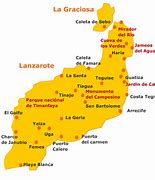
Island Insight
JOSÉ SARAMAGO HOUSE MUSEUM:
celebrating 13th Anniversary preview by Norman Warwick
We were reminded recently that it has been thirteen years since José Saramago House Museum opened its doors to visitors, who have turned up in their thousands from different continents and countries. Readers of Saramago´s novels, mostly, the visiting public also include the merely inquisitive callers who may not have been so familiar with his work. Visitors have been able to tour the rooms (many of which are lined floor to ceiling by books) of the writer´s house. Visitors can also contemplate the landscape of Saramago´s sunsets, afforded by the views to Papagayo on one side, and of Lobos and Fuerteventura from the front. The house museum is magnificent building and offers fantastic views of the coastline way down below.

José Saramago (born November 16, 1922, Azinhaga, Portugal—died June 18, 2010, Lanzarote, Canary Islands, Spain) Portuguese novelist and man of letters who was awarded the Nobel Prize for Literature in 1998.
The son of rural labourers, Saramago grew up in great poverty in Lisbon. After holding a series of jobs as mechanic and metalworker, Saramago began working in a Lisbon publishing firm and eventually became a journalist and translator. He joined the Portuguese Communist Party in 1969, published several volumes of poems, and served as editor of a Lisbon newspaper in 1974–75 during the cultural thaw that followed the overthrow of the dictatorship of António Salazar. An anti-communist backlash followed in which Saramago lost his position, and in his 50s he began writing the novels that would eventually establish his international reputation.
One of Saramago’s most important novels is Memorial do convento (1982; “Memoirs of the Convent”; Eng. trans. Baltasar and Blimunda). With 18th-century Portugal (during the Inquisition) as a backdrop, it chronicles the efforts of a handicapped war veteran and his lover to flee their situation by using a flying machine powered by human will. Saramago alternates this allegorical fantasy with grimly realistic descriptions of the construction of the Mafra Convent by thousands of labourers pressed into service by King John V. Another ambitious novel, O ano da morte de Ricardo Reis (1984; The Year of the Death of Ricardo Reis), juxtaposes the romantic involvements of its narrator, a poet-physician who returns to Portugal at the start of the Salazar dictatorship, with long dialogues that examine human nature as revealed in Portuguese history and culture.
Saramago’s practice of setting whimsical parables against realistic historical backgrounds in order to comment ironically on human foibles is exemplified in two novels: A jangada de pedra (1986; The Stone Raft; film 2002), which explores the situation that ensues when the Iberian Peninsula breaks off from Europe and becomes an island, and O evangelho segundo Jesus Cristo (1991; The Gospel According to Jesus Christ), which posits Christ as an innocent caught in the machinations of God and Satan. The outspoken atheist’s ironic comments in The Gospel According to Jesus Christ were deemed too cutting by the Roman Catholic Church, which pressured the Portuguese government to block the book’s entry for a literary prize in 1992. As a result of what he considered censorship, Saramago went into self-imposed exile on the Canary Islands for the remainder of his life.
Among Saramago’s other novels are his first, Manual de pintura e caligrafia (1976; Manual of Painting and Calligraphy), and such subsequent works as Historia do cerco de Lisboa (1989; The History of the Siege of Lisbon), Todos os nomes (1997; All the Names), O homem duplicado (2002; The Double), As intermitências da morte (2005; Death with Interruptions), and A viagem do elefante (2008; The Elephant’s Journey). Ensaio sobre a cegueira (1995; “Essay on Blindness”; Eng. trans. Blindness; film 2008) and Ensaio sobre a lucidez (2004; “Essay on Lucidity”; Eng. trans. Seeing) are companion novels. In 2012 his novel Claraboya (“Skylight”), which had been written in the 1950s but languished in a Portuguese publishing house for decades, was posthumously published.
Saramago also wrote poetry, plays, and several volumes of essays and short stories, as well as autobiographical works. His memoir As pequenas memórias (2006; Small Memories) focuses on his childhood. When he received the Nobel Prize in 1998, his novels were widely read in Europe but less known in the United States; he subsequently gained popularity worldwide. He was the first Portuguese-language writer to win the Nobel Prize. In 1999 the biennial Prémio Literário José Saramago (José Saramago Literary Prize) was established in his honour to recognize young authors writing in Portuguese.

Visitors to the house museum can enjoy a Portuguese coffee in the Saramago kitchen, but whenever we visit we take our drink out into the beautiful garden.
The House of the Nobel Prize Winner for Literature José Saramago, in a nod to his novel The Year Of The Death Of Ricardo Reís, opened its doors to the public just nine months after Saramago´s death, on June 18, 2010.
In this way Saramago remains alive not only in the memory of his readers, but also in his house through the people who visit and inhabit it.
Visitors have flocked to tour the magnificent rooms and gardens of the house, situated on the crest of the hill in Tias, with plenty of car parking on nearby open land.
It may be a museum and it is certainly a place of gentle opulence but is often referred to by those signing the visitors books as ‘a very alive house’, a phrase that is repeated in Google reviews, at the end of the tour of the house, gardens and the library.

Tours are mostly undertaken in the company of guides who say they feel like they are part of the Saramago family, because of their knowledge of the author and his work. This is apparent in the quality and warmth with which they tell details of Saramago’s daily and literary life in Lanzarote.
Saramago was, of course, not only a writer both profound and prolific, but also a humanist who stood out for his commitment to defending Human Rights, social justice and peace.
The José Saramago House Museum celebrated this 13th anniversary by toasting with visitors from different communities and countries, Catalonia, Madrid, Euskadi, Portugal, Italy, Germany, France and announcing its next cultural activities for this year 2024,

These include a presentation pn April 26th, a highly anticipated event that will be broadcast in streaming, and in which the two House Museums of two Nobel Prize winners, Pablo Neruda and Saramago, will participate, on two islands, Isla Negra and Lanzarote.
Many readers of these pages will also be aware that the Annual Lanzarote Book Fair will be held in Teguise between May 2 and May 5 and will feature, for the first time, the participation, of the José Saramago House Museum.
Finally, you might be interested to know that the José Saramago Library is open for reading in the afternoon of every first Tuesday of each month with the ‘Reading Out Loud’ program organized by the Puerto del Carmen Reading Club, which began in January, reading texts and poems about peace.
Island Insights
Violin Recital by
previewed by Norman Warwick
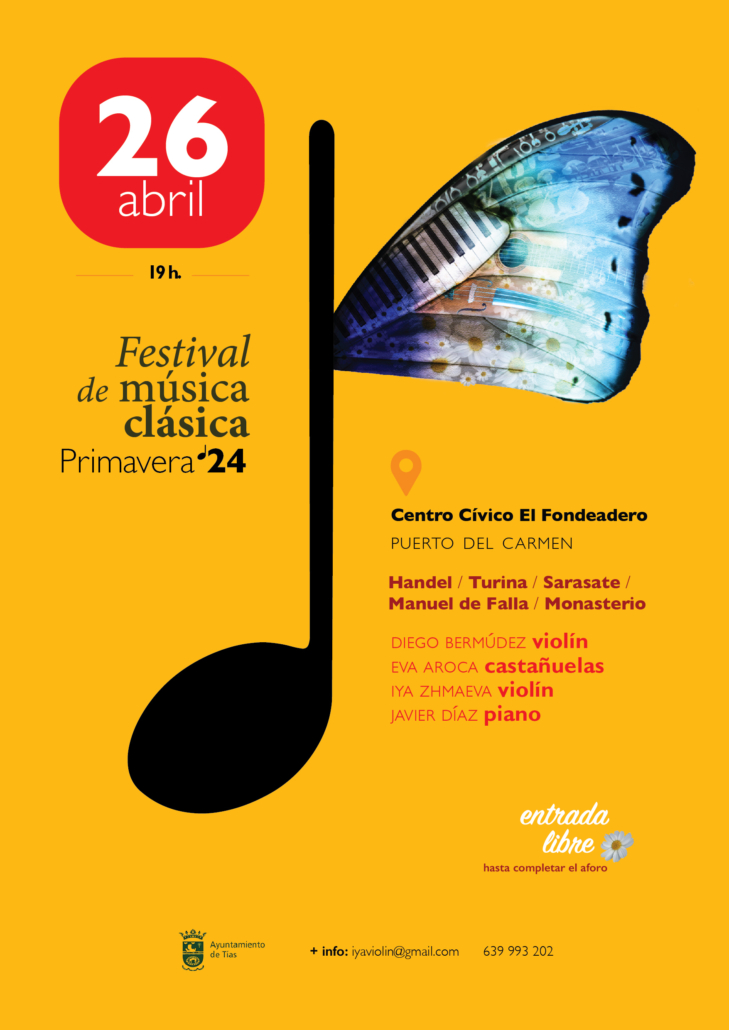
We are looking forward to the next in the series of Festival de musica clasica Primavera 24 in the Fondeadero in Puerto del Carmen on 26th April. We have recently heard the beautiful classical violin work of Diego Bermudez Zmeava when he played in support of a choir who invited us all to a Bach family reunion party. Only a fortnight later we then heard him again playing in a trio with his mother, one of the island´s most loved musicians, and his mentor from the Conservatoire on the piano.
We spoke to Diego after that performance and told him we had previously featured an interview with his mother on these pages seven or eight years ago. She had spoken with us in interview about her young boy who was just starting at the music school. At the most recent concerts we had no idea that Diego was that boy. He seemed to us a mature and already highly accomplished musician, one of the many providing evidence of the Arrecife Conservatoire´s ability to identify talent.
Diego e-mailed our office this week to inform us of another forthcoming concert.. He also accepted our request for an interview, and that could well become an important piece in our archives as he seems certain to become a leading name in classical music around the Canaries and far beyond.
Events at this venue usually see us taking the water taxi from Puerto Calero up to Puerto Del Carmen, where we step off the boat into the La Valetta restaurant until the doors open at the theatre only twenty yards away.
With piano, two violins and catanuellas, this concert should be of a lovely tone and with Handel and Manuel de Falla on the programme it will be ´Some Enchanted Evening´..
Strangely, on our first ever holiday on Lanzarote some twenty years ago, and twelve years before we came to live here, the first concert we ever attended was a choral performance in this very theatre. It was in December and as night fell early, we got totally lost walking around the harbour looking for what we assumed would be a large and light and bright theatre, but nothing could we find. Hearing a lady singing to herself by her open front door, I sought directions in badly broken Spanglish, and suddenly she was walking away, but beckoning us to follow here. She led us about two hundred yards to some steps up to a courtyard. We stepped up and there was El Fondeadero, well concealed amongst houses and an administration office in a town square.
We were still early, however and so took a couple of front row seats and by the time of the recorded introduction to welcome the choir on stage the theatre was full to the rafters. The lady who had led us through the town and delivered us here, in her hair rollers and dressing gown, smiled down at us from the stage. She was the very elegant music director !
We know our way there now of course and we look forward to yet another concert in this beautifully lit harbour area. We hope we see you there.
.




Leave a Reply
Want to join the discussion?Feel free to contribute!